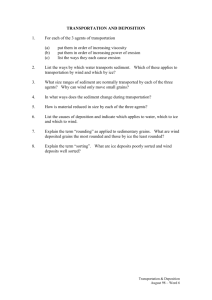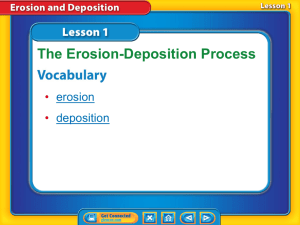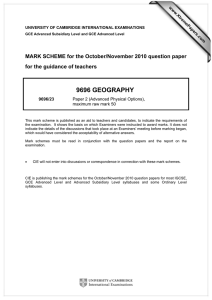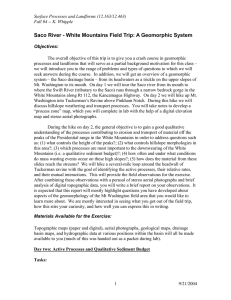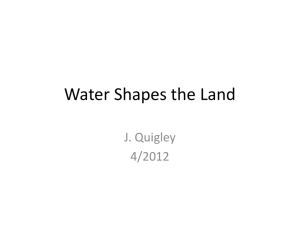Weathering, Erosion, Deposition
advertisement
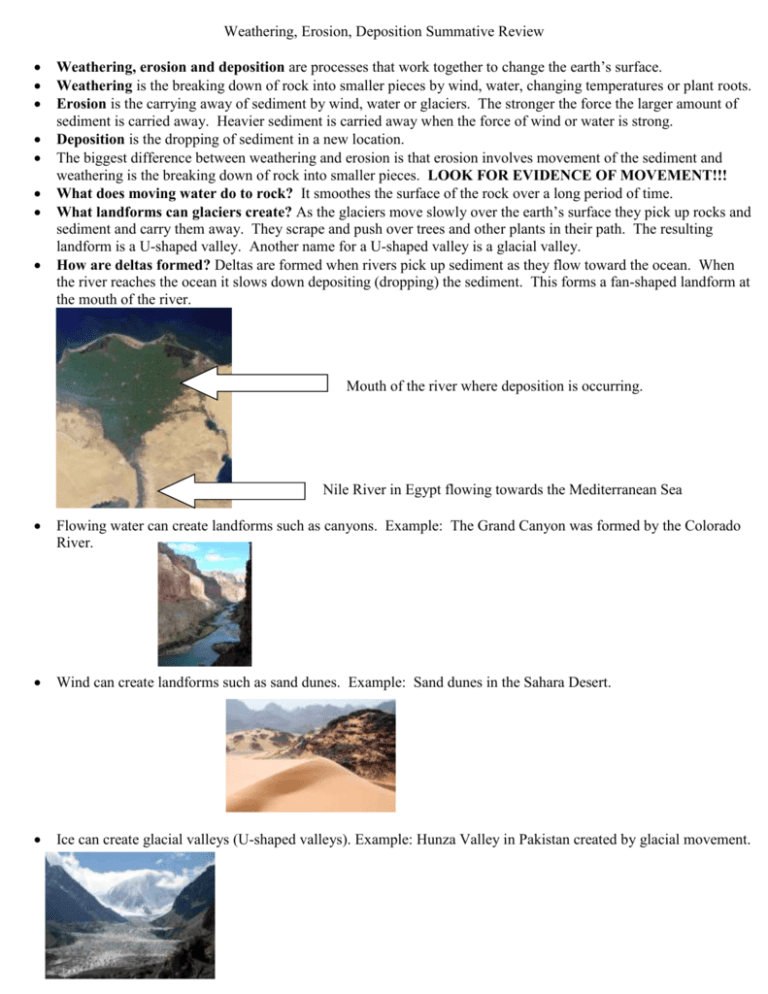
Weathering, Erosion, Deposition Summative Review Weathering, erosion and deposition are processes that work together to change the earth’s surface. Weathering is the breaking down of rock into smaller pieces by wind, water, changing temperatures or plant roots. Erosion is the carrying away of sediment by wind, water or glaciers. The stronger the force the larger amount of sediment is carried away. Heavier sediment is carried away when the force of wind or water is strong. Deposition is the dropping of sediment in a new location. The biggest difference between weathering and erosion is that erosion involves movement of the sediment and weathering is the breaking down of rock into smaller pieces. LOOK FOR EVIDENCE OF MOVEMENT!!! What does moving water do to rock? It smoothes the surface of the rock over a long period of time. What landforms can glaciers create? As the glaciers move slowly over the earth’s surface they pick up rocks and sediment and carry them away. They scrape and push over trees and other plants in their path. The resulting landform is a U-shaped valley. Another name for a U-shaped valley is a glacial valley. How are deltas formed? Deltas are formed when rivers pick up sediment as they flow toward the ocean. When the river reaches the ocean it slows down depositing (dropping) the sediment. This forms a fan-shaped landform at the mouth of the river. Mouth of the river where deposition is occurring. Nile River in Egypt flowing towards the Mediterranean Sea Flowing water can create landforms such as canyons. Example: The Grand Canyon was formed by the Colorado River. Wind can create landforms such as sand dunes. Example: Sand dunes in the Sahara Desert. Ice can create glacial valleys (U-shaped valleys). Example: Hunza Valley in Pakistan created by glacial movement.







